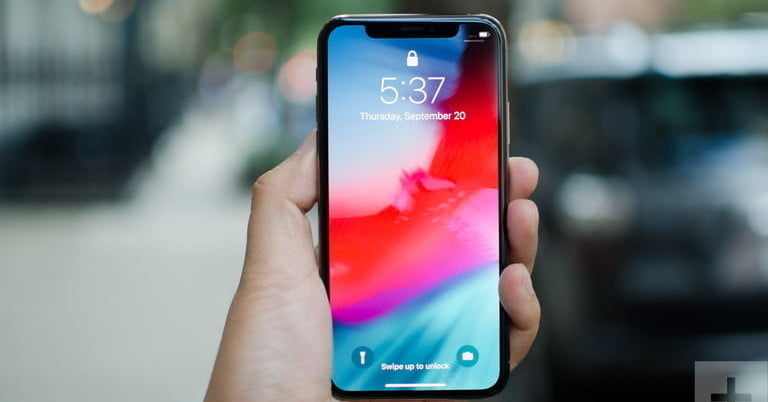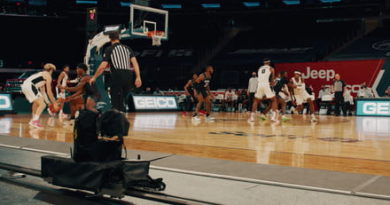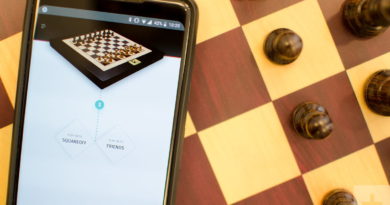How to Fast Charge Your iPhone
[ad_1]
There are days when you can’t put everything on hold to wait for your phone to finish charging. When that happens, you might be surprised to learn that you have options to significantly reduce your iPhone’s charging time.
In this guide, we’ll walk you through how to do it, from determining whether your phone has the capacity for fast charging to the equipment that will cut down your charge time.
What is fast charging, and why can’t my charger do it?
We’ve written a comprehensive guide to fast charging, but let’s review. Fast charging uses a newer USB technology called USB Power Delivery (USB PD). This technology is only available in USB-C connections, which can route power as well as data and are suitable for charging a variety of devices. It’s a very flexible and efficient option that can optimize power management. By upgrading to a USB PD connection, you can achieve charging speeds far faster than Apple’s older Lightning cable connections.
You see, that 5W charger that comes with most iPhones is not capable of fast charging. It can supply enough power for a basic recharge, but it’s not able to transmit a charge fast enough to juice anything with a higher-capacity battery, like an iPad. Most iPads come with a 12W charging block instead. If you own an iPad, you can use one of these to speed up your iPhone’s charging rate — it won’t harm your phone in any way since the phone will never take more charge than it can handle.
The iPhone 8 and newer devices are capable of even faster charging with support for 18W connections and beyond. But getting those kinds of speeds requires an even better charger.
If you’re wondering how much quicker fast charging is, Apple claims it will refill up to 50% of your iPhone’s battery in a mere 30 minutes. This means you can finally say goodbye to waiting around for your phone to charge, and bid farewell to overnight charging entirely. Needless to say, fast charging will ease the anxiety you get when you’re about head out the door and realize your phone is at 17 %.
Note that this is only the beginning of fast charging trends. Oppo recently came out with a 125W charger that can charge a 4,000mAh battery in 20 minutes. This is a burgeoning sector in the phone market, and it’s likely that charging speeds will continue to get even faster.
Which iPhones support fast-charging?
The following fast-charging iPhones are not sold with a fast charger:
- iPhone 8
- iPhone 8 Plus
- iPhone X
- iPhone XS
- iPhone XS Max
- iPhone XR
- iPhone 11
- iPhone SE (2020)
The following fast-charging iPhones are sold with a fast charger:
- iPhone 11 Pro
- iPhone 11 Pro Max
iPhone hardware continues to improve, charging speeds are likely to be better with the newest iPhone models, and charging improves over time with iOS updates, all of which can result in significant differences between iPhone models. In fact, if you were to choose the iPhone 11 Pro Max, some of the latest tests have it charging at an impressive 22.5W with USB PD, faster than Apple’s stated standard. Fast charging also works with the iPad Pros, the third-generation iPad Air, and the fifth-gen iPad mini.
Apple’s official fast charger
While Apple doesn’t supply a fast charger with many of its iPhones, it does sell a fast charger in the form of a new cable and charging block for your device. This is far from the least expensive option, but if you’re happy to spend the money to get your charger straight from Apple, here’s what you need.
The cable

A USB-C connection is required for this fast charging option for your iPhone. However, even the very latest iPhones don’t come with a USB-C port (at least, not yet). So, if you want to start enjoying these faster charging times, then your first step is to get a USB-C to Lightning cable adapter.
As we mentioned above, the latest iPhone 11 Pro models will ship with this type of adapter cable. However, if you have an older iPhone, then you can always buy such a cable directly from Apple. They are guaranteed to work with your iPhone and come in 1 or 2 meter length options.
The power adapter

Along with the fast charging cable, you’ll need a special charging block , because what’s an Apple product without a bunch of peripherals? It’s an 18-watt adapter with a USB-C port, rather than the usual USB-A port. If you’re just looking to fast charge an iPhone, then the $29 official 18-watt USB-C power adapter is all you need.
If you have a newer MacBook, then you may also already have a power adapter that can handle all your fast-charging needs. Many MacBooks — specifically, 2015 models and newer — use USB-C-compatible charging blocks, and you can use one of these to fast charge your iPhone when combined with the USB-C to Lightning cable. The most common is the official 30-watt USB-C power adapter, and it can easily pull double-duty, if required.
If you’re rocking a MacBook Pro, then you might have a charger that’s even more powerful than the 29-watt or 30-watt varieties, and Apple has confirmed that even the 61-watt and 87-watt versions are safe to use with your iPhone 8 or any of the newer models. Remember, the amount of power used is regulated by your phone, so it will never draw more than it can handle and damage itself — and the charger can’t force your phone to accept a wattage that’s too high for it to handle.
Note: If you’re buying an adapter just for fast charging, there’s no need to buy an adapter stronger than 18-watt; iPhones can only handle an 18-watt charge, so a more powerful charger would just cost more money and not offer any extra benefits.
The alternative options
As you might have noticed, Apple’s fast-charging package comes in at a cool $48. While iPhones aren’t exactly known as budget devices, that isn’t exactly pocket change for another charger. Thankfully, Apple doesn’t hold a monopoly where iPhone fast chargers are concerned, and you’ll find alternatives elsewhere that will deliver the same performance at a much lower price, or offer additional durability.
Note: While we’ve endeavored to select only the best brands and recommended products, we haven’t tested the products below, so use them at your own risk and your mileage may vary.
Alternative charging cables
It can be quite tough to find a USB-C to Lightning cable that doesn’t come from Apple, and that’s because Apple is strict about who can sell it. One of the few manufacturers allowed to create such cables is the rugged accessories creator Nomad, and while expensive, Nomad’s USB-C to Lightning cable is a great choice if you need a tougher cable.

It measures 1.5 meters, so it’s slightly longer than Apple’s standard cable, but the real magic is in its toughness. It’s protected by a tightly wound Kevlar braid and has additional protection around the connector, thus ensuring the cable can survive even the worst punishment. It’s expensive mind you, however, it’s backed up by Nomad’s five-year warranty as opposed to Apples one-year limited warranty, which takes the sting out somewhat.
Alternative power adapters
You can grab any power adapter with a USB-C port and enough power, but make sure it supports USB Power Delivery (USB-PD) and stick to reputable brands.

This 30-watt USB-C wall charger is a budget-friendly option from Anker. At only $26 – less than half the price of Apple’s 30-watt charger. Anker’s accessories are decent, so you can save without skimping on quality.
Look mom, no wires

To wrap up, you might want to consider a wireless charging pad. Wireless chargers charge at respectable speeds, but they still charge your devices more slowly than the wired chargers on the list.
For the time being, the highest wattage an iPhone can get from the Qi wireless charging pad is 7.5 watts, but this is sure to improve as the company comes out with hardware and operating system updates over time. You might want to choose a charger that can handle a higher wattage to anticipate future capabilities. The 10W Belkin Wireless Charger for $30 and the 15W Letscom Charger for $9 are both worthy options.
See our list of the best wireless chargers for several additional high-quality options.
Final charging tips
Regardless of which charger you buy, make sure to follow these speed and safety tips:
- Never charge near a heater, direct sunlight, or any other source of warmth. Heat, which isn’t suitable for your battery, can damage it while it charges and lead to increased charging time.
- You can always put your iPhone into Airplane Mode to help it speed up charge time. Or, if possible, turn it off altogether.
- Generally, a wall or power strip outlet will charge faster than a computer can.
Editors’ Recommendations
[ad_2]
Source link




